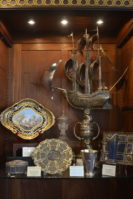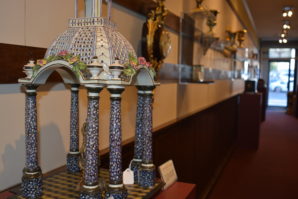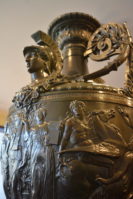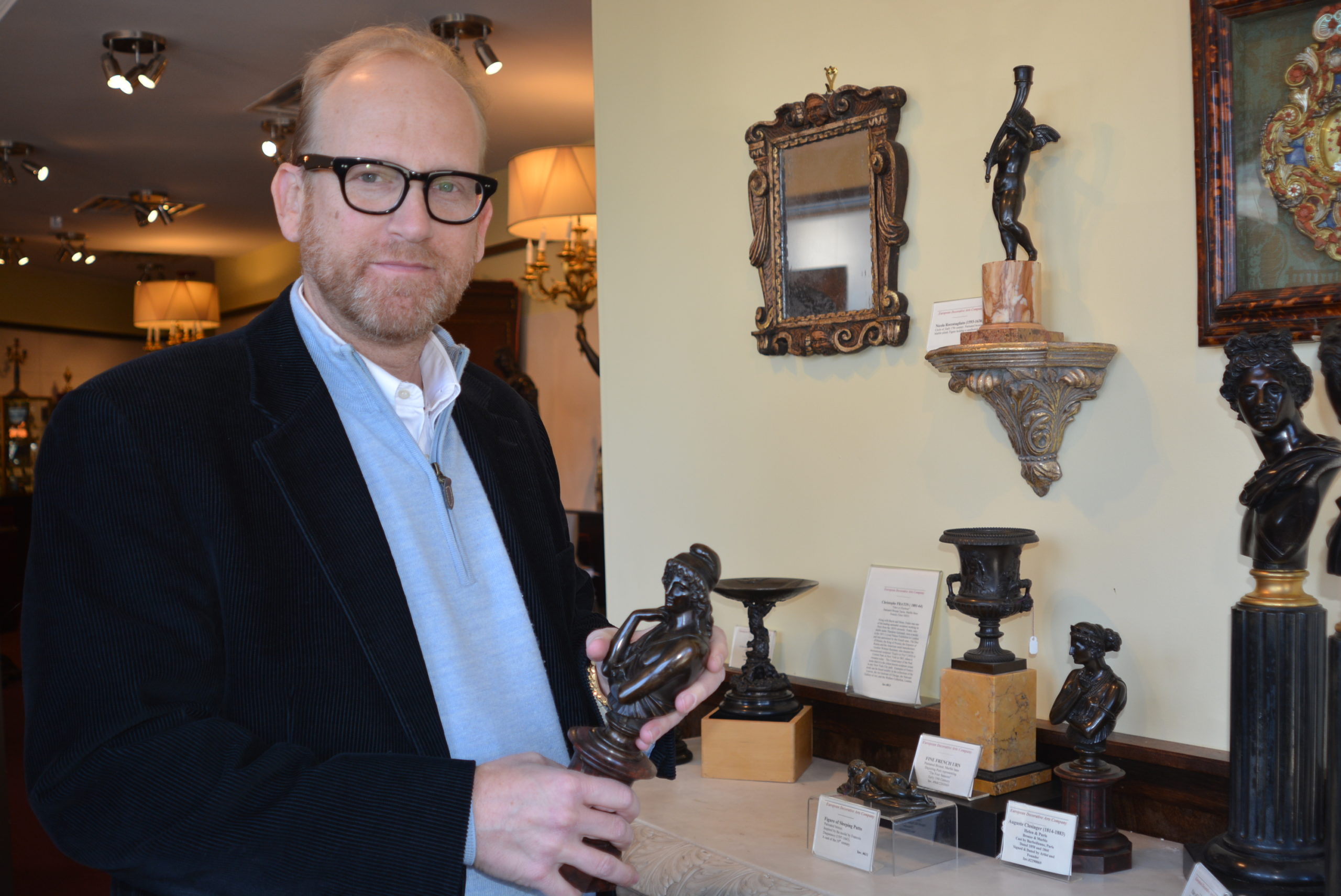There’s a museum in a Greenvale shopping center. Technically, it’s not a museum because the items – rare, decorative European objects dating from 1600 to 1900 – are all for sale.
It’s not uncommon for them, however, to find their way from the store into museums.
East Hills’ Scott Defrin owns the store, European Decorative Arts Co., and manages the coming and going of its relics. He studied at two of the world’s largest auction houses and built his business in New York City over 20 years ago.
He sells items to collectors and museums, including “at least five or seven pieces” to the Metropolitan Museum of Art. After 18 years of running his gallery out of Manhattan, he’s moved it closer to his East Hills home.

Inside the gallery is a case with a 288-year-old Estonian beaker and a ship with its metal sails soaring through the wind. Bordering the case are two Barbadienne candelabra, decorated women shaped in bronze, raising clusters of candles high above their heads.
Around the corner is a hallway lined with smaller objects including an Italian micro-mosaic and a model of a pavilion with pink ceramic flowers perched on the roof’s edge.
“They’re objects that nobody can ever make today,” Defrin said. “The technique that the craftsman used to use to make objects like this just are not available anymore and that’s partly because they’re historical items.”
Defrin has been around European antiques his whole life. They were coming in and out of his Long Island home as a child.
His parents were collectors and then became dealers, a common transition, Defrin noted – “you’re constantly upgrading so you need to sell to keep on purchasing.”
Defrin began his formal study of the history of decorative arts at Sotheby’s and Christie’s auction houses in London.
“That was the best experience,” he said. “London has such great collections of art and decorative arts so it was the ideal place to get a good background.”
He then returned to New York where he interned at Sotheby’s and earned his master’s at the Cooper Hewitt Museum.

In 1996, he started his company and in 2000 he opened a gallery in Manhattan.
“In those years our European clientele was much more available to us,” Defrin said. “The European dealers would come here very often and that was our bread and butter business.”
That base fell off around 2010, Defrin said, but since then his American one has grown.
“That’s due primarily to the antique shows I do,” he said. “I do a show three times a year.”
He’s on the board of the Art and Antique Dealers League of America, which touts itself as the country’s oldest art and antique organization.
Throughout his studies and trading, Defrin said he is particularly drawn to 19th century work.
“I think that was a very, very exciting time in European history, especially for the growth of the market of decorative items,” Defrin said. “That’s when we saw an explosion of things being made for a newly moneyed people during the industrial revolution.”
In the center of his store’s main room is an elevated, towering urn-shaped object, labeled “Vase de Paix,” currently Defrin’s second most expensive item, valued at $140,000.
When he bought it from another individual in the trade on Long Island last spring, he was clueless about what it was, he said.
So he started a scavenger hunt.

The object was signed and dated 1862, and Defrin began sifting through historic catalogs, including the Gazette des Beaux-Arts, a French publication originating in 1859.
And that’s where, at approximately 2 a.m. and to much excitement, he found it, Defrin said. It had been exhibited at the Philadelphia International Exposition in 1876.
“I knew I was going to find it because something like this is not a casual piece,” he said.
Though so far he’s only had conversations about it with an American museum, Defrin said he expects it will end up in a French one.
“It should go back home,” he said.



